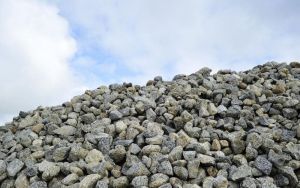
Granulated Slag
Granulated slag is formed by quenching molten slag in water to form sand-sized particles of glass. The disordered structure of this glass gives the material moderate hydraulic cementitious properties when very finely ground into granulated blast furnace slag, but if it can access free lime, the granulated blast furnace slag develops strong hydraulic cementitious properties.
...more
Granulated Iron Blast Furnace Slag
Air-cooled blast furnace slag is formed by allowing the molten slag to cool relatively slowly under ambient conditions; final cooling can be accelerated with a water spray. The cooled material is hard and dense, although it can have a vesicular texture with closed pores. After crushing and screening, air-cooled slag can be used in several applications. Granulated slag is formed by quenching molten slag in water to form sand-sized particles of glass. The disordered structure of this glass gives the material moderate hydraulic cementitious properties when very finely ground into granulated blast furnace slag, but if it can access free lime, the granulated blast furnace slag develops strong hydraulic cementitious properties.
...more
granulated blast furnace
is formed by quenching molten slag in water to form sand-sized particles of glass. The disordered structure of this glass gives the material moderate hydraulic cementitious properties when very finely ground into granulated blast furnace slag, but if it can access free lime, the granulated blast furnace slag develops strong hydraulic cementitious properties.
...more
furnace slag
Furnace Slag is formed by allowing the molten slag to cool relatively slowly under ambient conditions; final cooling can be accelerated with a water spray. The cooled material is hard and dense, although it can have a vesicular texture with closed pores. After crushing and screening, air-cooled slag can be used in several applications.
...more
Flyash

mill scales
Be first to Rate
Rate This